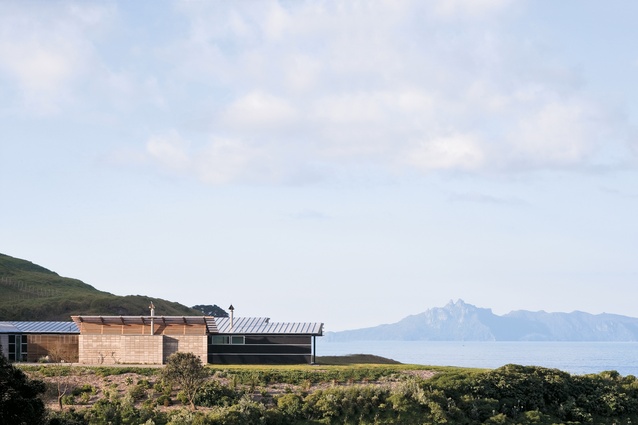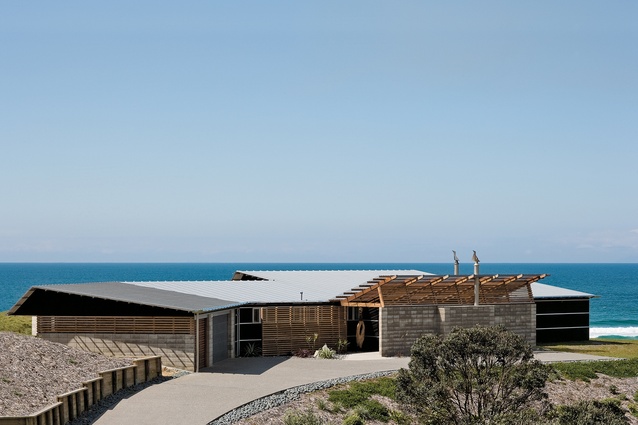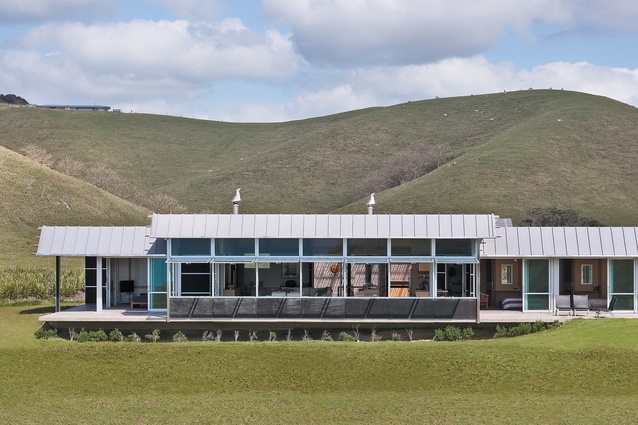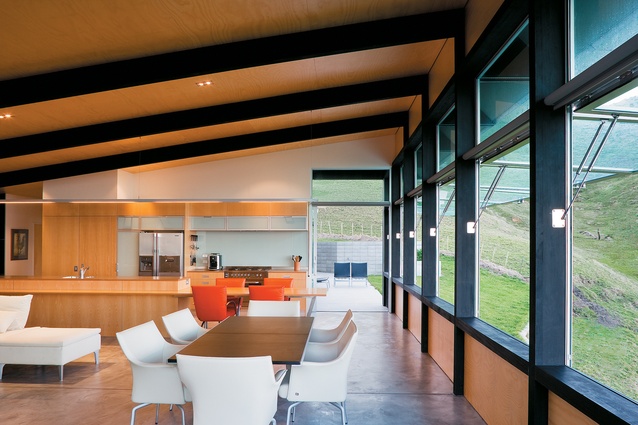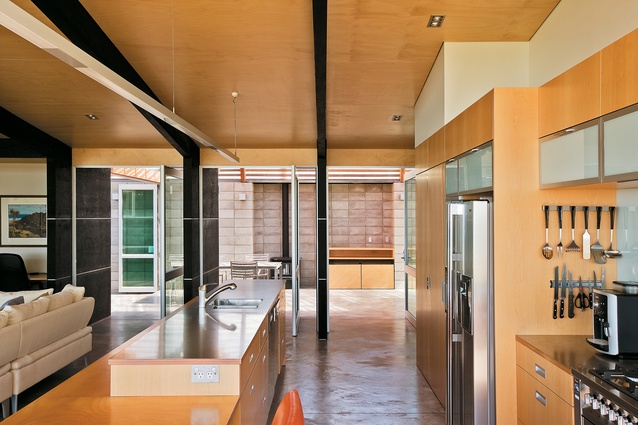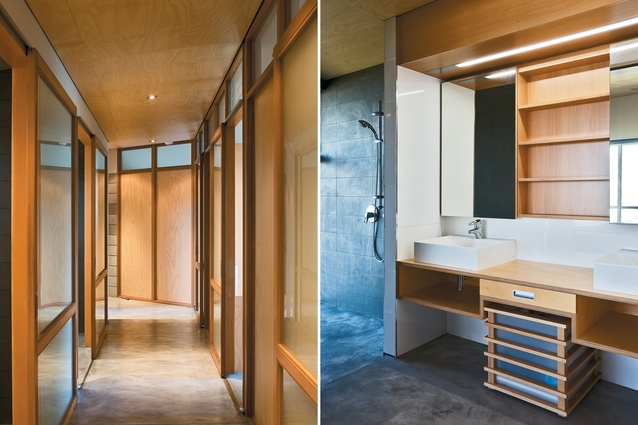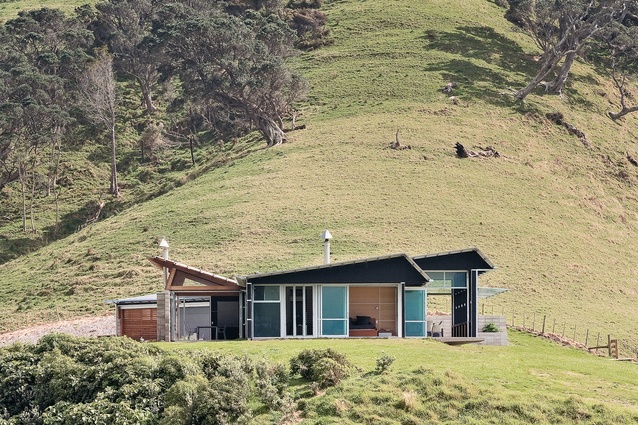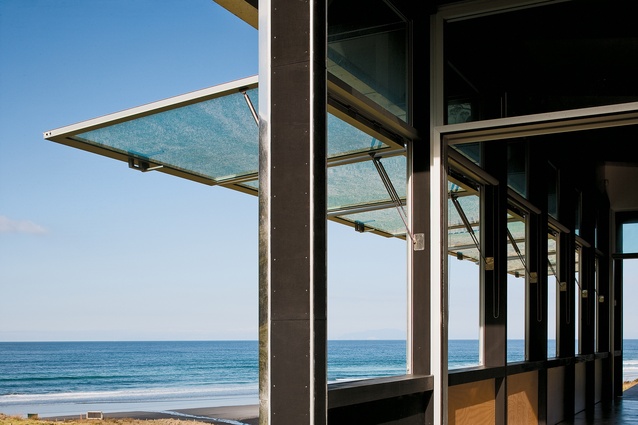Houses Revisited: Nesting instinct
From the archives: Form follows climate in this home from Strachan Group Architects near Mangawhai Heads, which looks set to take flight.
The house sits on a small plateau on a hill above the water, hemmed in by virgin forest and the archaeologically significant middens of the site’s previous Māori occupants. In between the forest and middens, a farm track used to pass through here, a worn line of intrusion into this otherwise lightly touched spot just north of the beach at Mangawhai Heads. The house, designed by Strachan Group Architects (SGA), nestles into its site with a confident humility, a characteristic of the practice’s architectural approach.
The subdivision is part of a working sheep and beef farm. Buyers of sections here own a 10-acre lot, but ownership is rather like a form of stewardship over the land, as the purchasers only have exclusive rights to use one acre, a tenth of their property, for themselves. A public walkway passes through the subdivision. Surrounding the plateau where the house is situated are other flattened plateaus, indicators of Māori occupation. The house pays homage, then, to the previous habitation and use of the land by siting itself in a similar position.

While Mies famously pronounced that form should follow function, SGA adheres to a mantra of form follows climate. Those key issues of climate – sun, wind, and rain – were at the forefront of the architects’ minds when they started to consider the form. The house sculpturally moulds these climatic forces into a habitable home. The form of the house was shaped directly from its environment, which includes the thin tongue of land that was available to build on.
Through the design, there are moments where it becomes obvious that the architects have stepped back and have tried to interfere as little as possible with the land. The concrete floor, for example, floats out over the bank on the far side, as it drops to the watercourse below. The building hunkers low into the hill, the garaging dug slightly into the earth to keep the overall form near to the ground, fostering a greater connection between ground and building but also respecting the developer’s covenant of keeping to a 5-metre maximum height.
The squat, low building could have seemed heavy, but the careful articulation of the roof has given the house a sense of lightness and buoyancy. Those earlier mentioned issues of climate – rain, sun, and wind – shaped the form of the roof, which at one end folds low down to keep out the rain driven by the north-east wind, while the other end folds up to catch the last of the afternoon sun. In section, the crease resembles a beak-like form, while the turn-up at the opposite end is similar to a tail. A bird-like form was hatched.
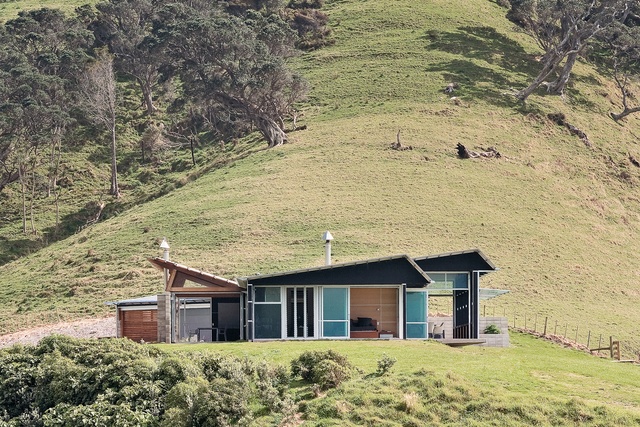
The house feels organic, despite being all rigid angles and straight lines. This modern house takes on a cosy atmosphere. A sense of life and vibrancy is apparent, made so by the development of the anthropomorphic idea of the house as bird. Once the initial form had been created, the architects highlighted these fowl-like features by ‘feathering’ the roof with frayed edges of timber beams that stick out beyond the roof line, lending a softness and lightness to the design.
Gassed up windows along the side of the house can be opened depending on the weather; the windows were imagined as a bird fluffing or ruffling its feathers: a little ruff around the neck. The design of the house, then, was an evolution, apt for the creature-like form. Its initial form was produced from the environment, and its body parts grew and adapted to best suit that environment. And, like a tropical bird that has developed extraordinary plumage to attract attention, this house has evolved to not only reflect its surrounds but also to be an object of desire in the landscape.
Timber and concrete block are the main exterior materials. The concrete anchors the house into the hill, giving it a sturdiness belied by the light roof. Black-stained plywood was used to make the low house retreat into the hill, while a screen of timber batons at the top of the walls mediates the shift from the sturdy base to the light roof. The three materials have been used together to create some richness of texture and colour on the exterior. This is taken through to the interior, where large open-plan spaces are clad in a honey-coloured plywood accentuated with black timber frames. The light coloured ply and dark frames reverse the dark ply and light batons used on the exterior.
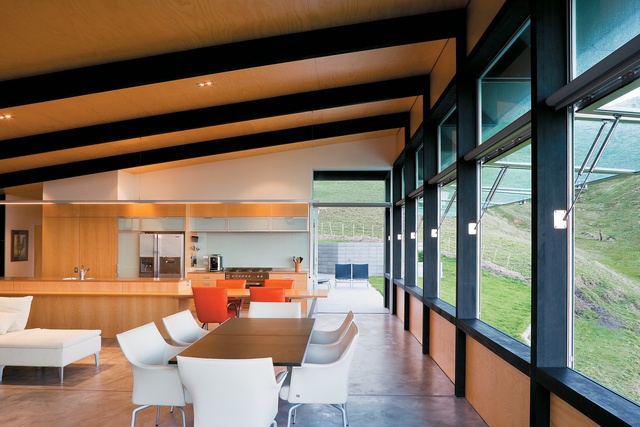
Planning developed from the notions of coming and going. Different groups use this bach: the owners by themselves, or with their extended family of adult children and small grandchildren, or with friends coming alone or with the owners. The brief was to be flexible and welcoming. The major planning arrangement separates the master wing from the guest bedrooms which works well when only the master suite is in use, but also offers privacy and separation when the house is full. The open living areas fill the central part of the house.
The architects consider the bach’s constant use to be a testament to its success. David Strachan mentions that when he last visited, a note had been left on the table from friends of the owners who had recently stayed, thanking them and enthusing about the absolute ease of relaxing there. While built houses are the obvious relics of his firm’s work, it is these more tenuous artefacts – letters, notes, passing comments – that reflect the legacy of a well-designed space. The lives lived within are the better for having experienced this space.
Click here to see more Houses Revisited.

